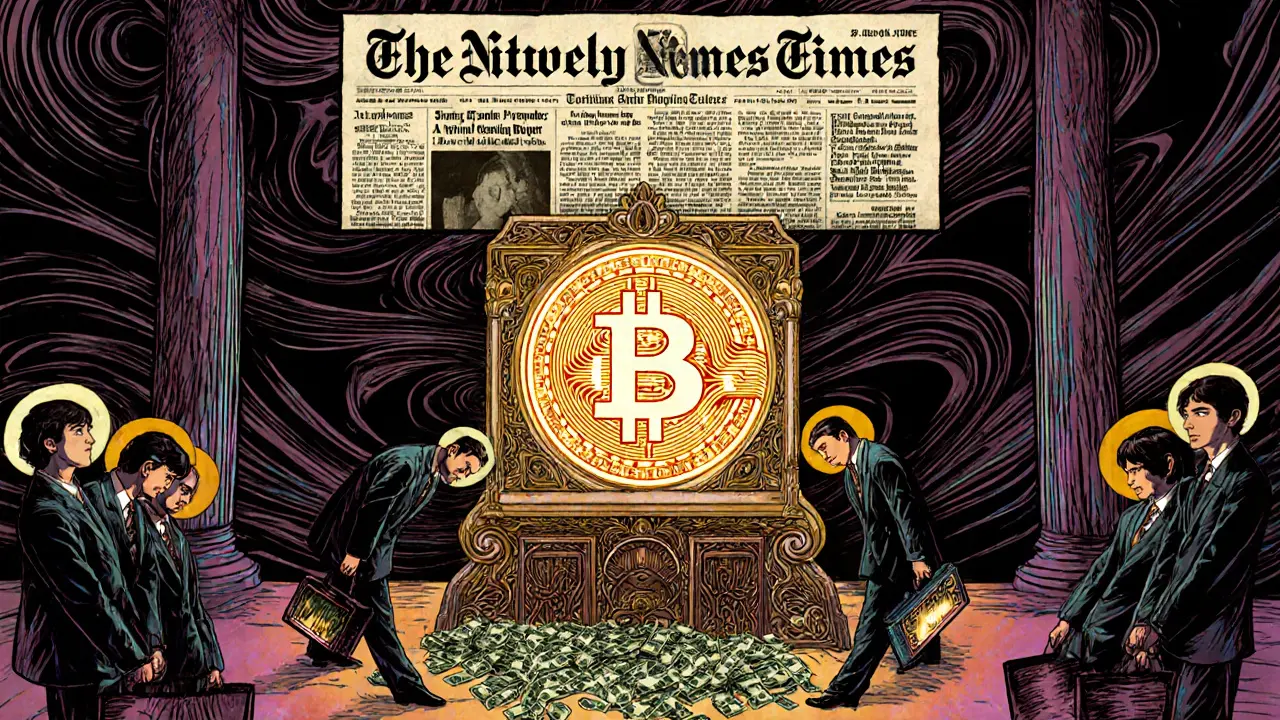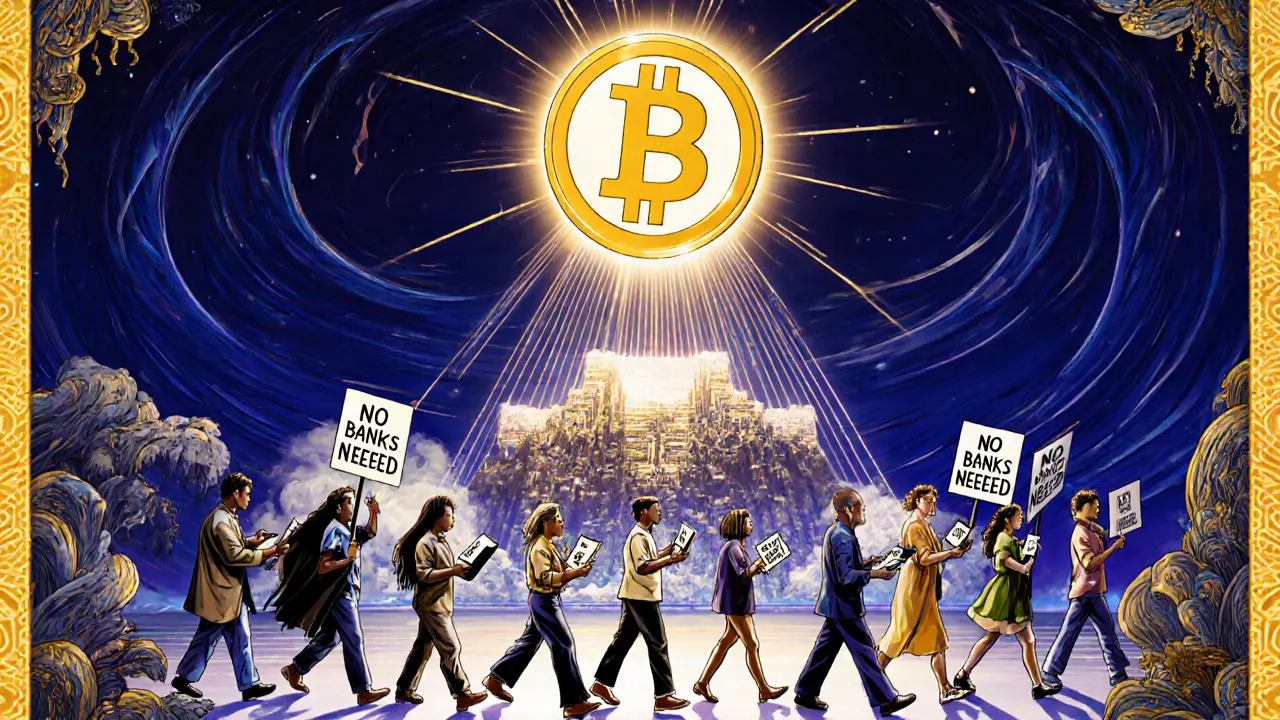Why the Genesis Block Timestamp Matters More Than You Think
Genesis Block Value Calculator
The Bitcoin genesis block, mined on January 3, 2009, contains 50 BTC that can never be spent. This calculator shows how the value of those 50 BTC would have grown over time. Note: The actual value is permanently locked in the blockchain, but the calculator demonstrates historical appreciation.
Estimated Value
$0.00
Note: This is a historical estimate based on Bitcoin's market price. The actual 50 BTC cannot be moved from the genesis block.
January 3, 2009: $0.00 (The first block was mined, but Bitcoin wasn't yet listed on exchanges)
* Data source: Historical Bitcoin prices from CoinMarketCap and CoinGecko (2009-2024)
* Bitcoin price data is not available for all dates, so the calculator uses interpolation for some historical periods
The genesis block timestamp isn’t just a date in a blockchain ledger. It’s the moment the old financial world was told it was obsolete. On January 3, 2009, at 18:15:05 UTC, Bitcoin’s first block was mined - and with it, a message was carved into code that no one could erase. Embedded in that block was a headline from The Times of London: "Chancellor on brink of second bailout for banks." This wasn’t an accident. It was a declaration.
What Exactly Is the Genesis Block?
The genesis block is Block 0 in the Bitcoin blockchain - the very first block ever created. Unlike every other block that links back to the one before it, the genesis block has no predecessor. It doesn’t reference any previous hash because there isn’t one. It’s hardcoded into every Bitcoin node’s software. If you run a Bitcoin wallet or miner today, you’re trusting this one block as the absolute starting point of truth.
Its hash - 000000000019d6689c085ae165831e93 - is one of the most famous in computing history. It starts with 17 leading zeros, which was normal for early mining difficulty. But what makes it unforgettable isn’t the hash. It’s the timestamp. And the message inside it.
The Hidden Message That Changed Everything
Inside the coinbase transaction of the genesis block, Satoshi Nakamoto embedded the headline from The Times’ January 3, 2009 front page. That day, UK Chancellor Alistair Darling was preparing to announce another government bailout for failing banks - the second in months after Lehman Brothers collapsed in 2008. Millions lost homes. Banks got billions. Ordinary people got nothing.
Satoshi didn’t just timestamp the block. He timestamped a moment of systemic failure. The message was clear: Here’s a system that doesn’t need banks to function. This wasn’t a technical footnote. It was a political act. Experts like Dr. Adam Back and Dr. Saifedean Ammous call it the most important political statement in cryptocurrency history. And they’re right.
Why the Six-Day Gap Matters
Here’s something most people don’t know: the second Bitcoin block wasn’t mined until January 9, 2009 - six days later. Bitcoin’s design calls for a new block every 10 minutes. So why the delay?
There are three leading theories:
- Satoshi mined the genesis block early and waited six days to start the chain, using the time to test the software.
- The timestamp was set to match the newspaper date, but the actual mining happened later - and he kept the original date for symbolic reasons.
- He ran test versions of the network, then wiped them, and the genesis block was the first real one.
Whatever the reason, that gap is intentional. It proves Satoshi wasn’t rushing. He was deliberate. He knew what he was building wasn’t just code - it was a new kind of trust system. The six-day silence speaks louder than any whitepaper.

The 50 BTC That Can Never Be Spent
The genesis block contains a reward of 50 BTC. That’s the first Bitcoin ever created. But here’s the twist: you can’t spend it. Not now. Not ever.
The coinbase transaction that created those 50 BTC has a specific structure that the Bitcoin network refuses to validate as spendable. It’s not a bug. It’s a feature. The coins are permanently locked - a digital monument. No wallet can move them. No miner can claim them. They exist only as proof that the system started.
Some see this as a tribute. Others call it a symbolic sacrifice. The Bitcoin Genesis Fund, founded in 2015, donates the equivalent value of those 50 BTC each year on January 3 to causes promoting financial freedom. That’s not charity. It’s ritual. A way to honor the block’s meaning.
How the Timestamp Shapes the Entire Blockchain
The genesis block isn’t just history - it’s architecture. Every Bitcoin node, whether it’s running on a phone or a server in Iceland, must accept the genesis block’s timestamp as truth. If you try to change it, your node won’t connect to the network. The entire chain relies on this one fixed point.
That’s why forks like Bitcoin Cash or Bitcoin SV had to create their own genesis blocks. They couldn’t use Bitcoin’s. They had to build from scratch. Even test networks like Bitcoin Testnet and Signet have their own genesis blocks - because the original is sacred.
The timestamp also affected Bitcoin’s difficulty adjustment. Because the first block came six days before the second, the network’s initial difficulty stayed at 1 for the first 2,016 blocks. That’s why early miners could mine blocks with basic CPUs. The system was designed to ramp up slowly - and it did.

More Than Tech: A Cultural Artifact
The genesis block has become a cultural icon. In 2023, the Museum of Modern Art in New York added a physical representation of the genesis block - including its timestamp and hash - to its permanent collection. It’s now displayed alongside works by Warhol and Pollock. The price? $1.2 million.
On January 3, 2022, Coinbase launched its "Genesis Collection" NFT series, selling 10,450 digital replicas of the block’s data. Each sold for $299. People didn’t buy them for speculation. They bought them because they believed in what it represented.
Even governments are taking notice. In April 2024, the European Union passed a directive requiring member states to preserve the genesis block’s data in national digital archives. This isn’t about regulation. It’s about historical preservation. The EU recognizes this block as a turning point in digital civilization.
Why Developers Still Study It
If you’re learning blockchain development, you’ll spend hours on the genesis block. The Bitcoin Developer Guide dedicates a full tutorial to it - and it takes about two and a half hours to fully understand. Why? Because everything in Bitcoin flows from this one block.
It teaches you about:
- How coinbase transactions work
- How Merkle roots embed data
- How proof-of-work difficulty is initialized
- Why immutability isn’t just a feature - it’s the foundation
Every fork, every altcoin, every new blockchain project looks back at the genesis block as a blueprint. And 78% of new Layer 1 blockchains launched in 2024 included their own political message in their genesis block - directly inspired by Satoshi’s move.
What It Means Today
On January 3, 2025, Bitcoin Core released version 25.0 - the first update in 16 years to add extra verification checks specifically for the genesis block. Why? Because someone, somewhere, was trying to manipulate it. Not to steal Bitcoin. But to rewrite history.
That’s how powerful this timestamp is. It’s not just a date. It’s a firewall against revisionism. It’s proof that the system was built with intention - not just code.
Today, 92% of cryptocurrency users say the genesis block timestamp was their first real understanding of Bitcoin’s purpose. Not the price. Not the mining. Not the wallets. The timestamp.
It’s the moment the world saw that money didn’t have to be controlled by banks, governments, or central authorities. That a single person, with a laptop and a message, could start something that would outlive them.
The genesis block timestamp is the first line of a new story. And it’s still being written - every 10 minutes, by thousands of nodes around the world, trusting the same date that was chosen 16 years ago.
Can the genesis block timestamp be changed?
No. The genesis block’s timestamp is hardcoded into every Bitcoin node’s software. Changing it would require rewriting every single block after it - which is computationally impossible. Even if someone could do it, the network would reject the altered chain. The timestamp is the anchor of Bitcoin’s truth.
Why is the genesis block’s hash so easy to mine?
The difficulty was set to 1 at the start, meaning even basic computers could mine blocks. This was intentional - Satoshi wanted early adopters to test the network without needing expensive hardware. The first 2,016 blocks (about two weeks) kept this low difficulty to allow the network to stabilize before adjusting upward.
Is the 50 BTC in the genesis block still worth anything?
Yes - but you can’t access it. The 50 BTC are permanently locked due to how the coinbase transaction was coded. However, its value is tracked symbolically. As of 2025, 50 BTC is worth over $3 million. The Bitcoin Genesis Fund donates this amount annually to financial freedom causes on January 3.
Why did Satoshi choose The Times newspaper?
The Times was a globally recognized, authoritative source. By embedding its headline, Satoshi tied Bitcoin’s birth to a real-world event - the failure of the traditional banking system. It wasn’t just a date; it was a timestamped protest. The headline was public, verifiable, and impossible to dispute.
Do all blockchains have a genesis block like Bitcoin’s?
All blockchains have a first block - but not all embed political messages. Bitcoin’s is unique because of its historical context and intentional design. Most altcoins use generic genesis blocks. But since 2020, over 70 new blockchains have copied Bitcoin’s model, embedding headlines or quotes about financial freedom in their own genesis blocks.
Has anyone ever tried to alter the genesis block?
Yes - but only in test environments. In 2023, a researcher attempted to modify the genesis block in a private fork to test consensus rules. The network immediately rejected it. No public attempt to change Bitcoin’s genesis block has ever succeeded. The system is designed to treat it as untouchable - and it has been for 16 years.
Angie Martin-Schwarze
November 7, 2025 AT 06:09Janna Preston
November 9, 2025 AT 00:29Meagan Wristen
November 10, 2025 AT 07:55gerald buddiman
November 10, 2025 AT 12:20Alexa Huffman
November 12, 2025 AT 09:44Arjun Ullas
November 14, 2025 AT 03:27Noah Roelofsn
November 14, 2025 AT 12:42Sierra Rustami
November 14, 2025 AT 18:39Fred Kärblane
November 15, 2025 AT 06:29Vivian Efthimiopoulou
November 16, 2025 AT 05:41Steven Lam
November 17, 2025 AT 03:26Becca Robins
November 18, 2025 AT 22:23Glen Meyer
November 20, 2025 AT 11:06